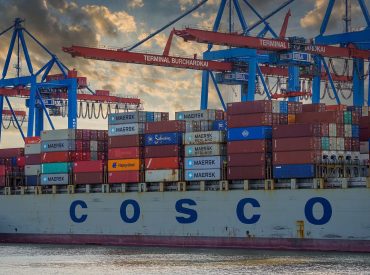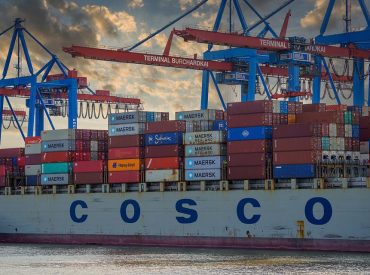We take immense pride in unveiling our latest masterpiece – our digital brochure. Packed with insights, expertise, and solutions that can transform your business, it’s a must-have resource for industry leaders and enthusiasts alike. Ready to explore a world of possibilities? Don’t miss out. Download our brochure today and embark on a journey of excellence with Refteck.
A Practical Approach to Supply Chain Risk Management
In today's globalised world, the supply chain is essential for manufacturing and retail operations, as it is responsible for ensuring product availability and generating revenue.
However, you can never predict the future, as there will always be disruptions. These hindrances to the supply chain can cause chaos and require retailers and manufacturers to address the issues quickly.
These supply chain disruptions result in an average annual cost of $200 million for organisations, putting their financial and reputational standing at risk in the market.
Some of the common risks that often top the charts of business disruptions are:
- Extreme weather conditions
- Economic stability
- Political and government changes
- Ocean freight bottlenecks
- Supplier inconsistency
- Quality of raw material
This is why Supply Chain Risk Management is no longer an option but a necessity!
In this blog post, we will equip you with a practical approach to SCRM, outlining key steps you can take to identify, assess, mitigate, and respond to supply chain disruptions.

What is Supply Chain Risk Management?
Supply chain risk management is a procedure in which a company strategically identifies, evaluates, and addresses all potential risks in its supply chain from start to finish. Since any disruption in the supply chain can create a problem for the whole company, having a supply chain risk management plan can help assess and manage risks throughout the supply chain, aiming to minimise vulnerabilities and maintain business operations.
Therefore, to successfully reduce supply chain risks, chief supply chain officers need to be knowledgeable and comfortable with the level of risk and the effectiveness of the control measures in place. Without this understanding, risk mitigation strategies will not be properly supported, and there is a higher chance of control failures.
We are here to offer you a list of measures you can take to reduce the potential risks in your supply chain.

A Structured Approach: Following the Key Steps Related to SCRM
No matter how difficult it may seem, there are certain measures that organisations can take to reduce their business's exposure to risk:
Step 1: Plan your supply chain:
The first step that you need to take is to have a clear understanding of your supply chain by mapping out all elements, such as suppliers, manufacturers, distributors, and transportation routes. You must also identify potential weaknesses, such as relying too heavily on one supplier or having a critical production facility located in a high-risk area.
Step 2: Identify and assess the risks:
After making a map, it's time to take a look at potential risks, including common ones. This step is essential, as risks can enter your organisation both internally and externally. Various factors, such as natural disasters, geopolitical instability, commodity price fluctuations, and cybersecurity threats, can all have a negative impact on production, transportation, supplier operations, and profit margins. Since you cannot control all types of risks at once, we suggest you identify each risk based on its likelihood and impact on your business. Then, prioritise that risk based on this assessment and focus on those with the highest potential for disruption.
Step 3: Known risk mitigation:
Over time, risks can accumulate, so you should foresee them by relying on past trends. It is also important to address these risks strategically by following various proactive measures, such as developing strategies to address them. Some of these potential approaches are:
- Avoid relying only on one supplier for all your business materials and make contact with different secondary suppliers.
- Manage your inventory by always having stock in advance of the needed materials necessary for your business operations.
- Make contractual agreements with suppliers by including provisions in the contract for managing risks and ensuring business continuity.
- Lastly, invest in technology to monitor the supply chain and identify potential risks in real-time.
Step 4: Implement a response plan:
Despite implementing effective mitigation strategies, unexpected disruptions may still arise. So, therefore, it is crucial to have a plan not to let them hamper your business operations. By taking steps like creating effective communication protocols within your organisation and with key supply chain partners, establishing contingency plans for potential disruptions, and forming a crisis management team to address and respond to emergencies, you can minimise the effect of risks on your business.
Step 5: Consistent monitoring and improvement:
You may now ask if you have implemented all the above steps and why there is a need to monitor. But let us tell you that work doesn't stop here! It is important to closely monitor each level of supply for any signs of potential risks. To simplify this process, it is recommended to invest in a digital solution that will automate the monitoring of different aspects of your supply chain. This will provide you with peace of mind, knowing that everything is happening in front of your eyes.
How can Refteck Solutions help?
Since supply chain disruptions can be costly and damaging, Refteck Solutions understands these challenges and assures you that they can help you mitigate risks and strengthen your supply chain.
Here’s how we can help:
Inventory optimisation:
We assist in creating inventory management plans based on data to reduce stockouts and holding costs, while also ensuring the availability of necessary materials.Risk management planning:
We work together to recognise possible risks and create backup plans to reduce their effects on your business operations.Global logistics expertise:
We have experience in global logistics and can effectively manage international procurement and transportation of goods across borders, navigating customs regulations to ensure a seamless process.
Therefore, by partnering with us, you not only get a 3PL but also a trusted advisor who can help you navigate the constantly evolving world of supply chain management. Reach out to us to explore how we can assist you in creating a stronger and more effective supply chain.
Conclusion
Knowing that there can be many known or unknown risks, a company has to take the best approach to handling them, or else it might end up in trouble, thereby losing both clients and sales. Having a partner by your side who can help you manage and implement various SCRM strategies can be of great help.
This is why Refteck is your answer!
Our experts can follow the above steps strategically and can help you build a more resilient supply chain that can ensure the continued success of your business operations.
































































































